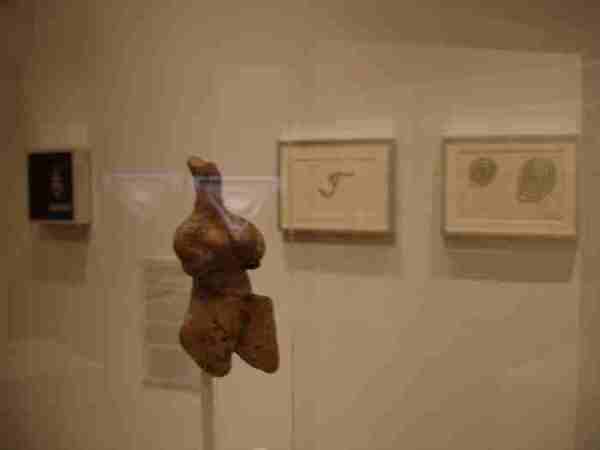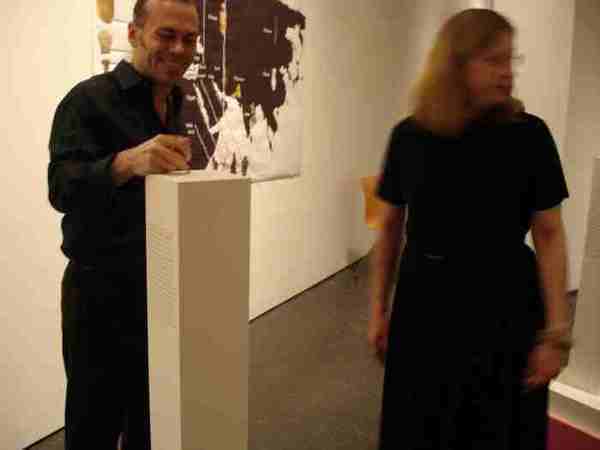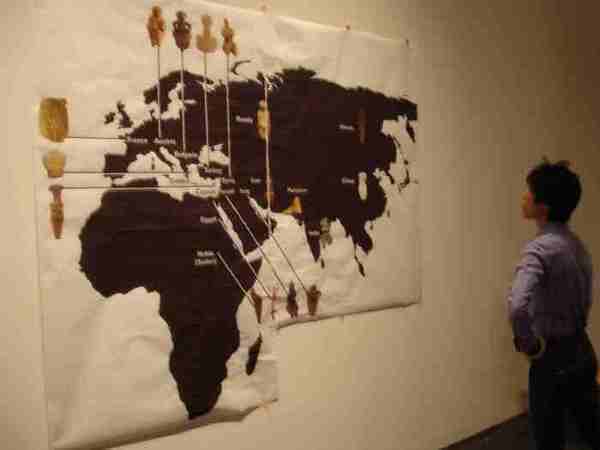The Fertile Goddess Comes to a Close

Excavated examples of figurines such as this one from northern Mesopotamia (modern Iraq) and Syria, made during the Late Halaf Period in the late fifth millennium B.C.E., have been found, often in groups, among domestic refuse.
We were thrilled to read of the discovery of the oldest known Paleolithic female figure and are fascinated by the widely divergent tone of the coverage from the press, as well as blogs and bloggers from all over the world just as our exhibition The Fertile Goddess nears its end. Although the ancient female figures on view in our exhibition are later, dating from the fifth to the first millennium B.C.E., they too have highly stylized forms that emphasize or reduce to abstraction breasts, bellies, and thighs; older Paleolithic figures are represented on a world map in the gallery.

Matthew Yokobosky, Chief Exhibition Designer, and I spent a lot of time positioning the mounts for each figurine. They were very tricky to steady because none of them, except for the seated Halaf figure, were made to stand by themselves.
Its interesting to compare the coverage of this discovery with the more nuanced views expressed in that of the anniversary of the discovery of the Venus of Willendorf last August, when Venus mania gripped Vienna. The title of the new book produced for the occasion is Die Frau von W. (The Woman of W.).

Tomoko Nakano, Assistant Graphic Designer, looks over the world map of female figurines. It took months and months to research and assemble a range of figurines from across the world, but we think it really paid off!
This weekend is your last chance to see nine extraordinary examples of ancient female figurines before The Fertile Goddess closes on Sunday, May 31st in the Herstory Gallery of the Elizabeth A. Sackler Center for Feminist Art.

Madeleine Cody is a Research Associate for Egyptian, Classical, and Ancient Middle Eastern Art. She has a B.A. in Classical and Near Eastern Archaeology from Bryn Mawr College, an MA in Egyptology from Brown University, and is currently completing her Ph.D. in Egyptian and Ancient Near Eastern Art and Archaeology at the Institute of Fine Arts, New York University. She has worked on excavations in Italy, Yemen and Egypt. Since coming to the Museum in 1997, she has been involved with numerous projects and assisted the late James F. Romano, Project Director, with the second phase of the reinstallation of the Egyptian Galleries, which opened in 2003. With Jim and Richard A. Fazzini, she is a co-author of Art for Eternity: Masterworks from Ancient Egypt (Brooklyn, 1999) and has written about other Egyptian objects from the Museum’s collection. Currently, she is working with the ancient Middle Eastern Art collection, her other area of expertise. She is co-curator of the Herstory Gallery exhibition, The Fertile Goddess, (December 19, 2008 – May 31, 2009).
